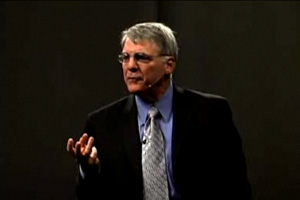Learn From the Dental Industry's TOP LEADERS!
Sit Chairside withDr. Dennis WellsCreator ofDURAthin® Prepless Veneers- OR -
|
The Diagnostic Model for the General Dentist.
DescriptionThis program is one of five presentations that were presented in an all day seminar titled "From Toothache to Migraine: The Trigeminally Mediated Disorders; Diagnosis, Treatment and Prevention." The goal of this program is to take the mystery out of the cause and progression of TM disorders and to make the evidenced based information useful in this regard. From pratical and relevent anatomy and physiology to the important concept of trigeminally initiated and mediated parafunction and parafunctional control, this 5-part program will attempt to separate fact from fiction. Diagnostically driven concepts will be thoroughly reviewed. Specific injuries that lead to both acute and chronic pain patterns will be described in terms of causes, diagnosis and treatment. It will be demonstrated that dentists can play a key role in migraine headache as well as obstructive sleep disorders. Dr. Glassman will discuss the diagnosis of TM pathology and strategies of their treatment and management.
Last Reviewed: 07/29/2012 Disclaimer: No commercial support was received for this course. Objectives
OutlineI. The many names of TMD/TMJ II. The TMD model for general dentist. III. Basic understanding of TMD is essential. IV. The key to treating TMD V. Treatment
ReferencesGremillion HA. The relationship between occlusion and TMD: an evidence-based discussion. J. Evid Based Dent Pract. 2006 Mar;6(1):43-7. Rinchuse DJ., McMinn JT. Summary of evidence-based systematic reviews of temporomandibular disorders. Am J Orthod Dentofacial Orthop. 2006 Dec;130(6):715-20. Sano T, Widmalm SE, Westesson PL, Takahashi K, Yoshida H, Michi K, Okano T. Amplitude and frequency spectrum of temporomandibular joind sounds from subjects with and without signs/symptoms of temporomandibular disorders. J Oral Rehabil. 1999 Feb;26(2):145-150.
|
 Submitting...
Submitting...


 FAGD/MAGD Credit Approval does not imply acceptance by a state or provincial board of dentistry or AGD endorsement 7/31/2018 to 7/31/2021 Provider ID# 317928
FAGD/MAGD Credit Approval does not imply acceptance by a state or provincial board of dentistry or AGD endorsement 7/31/2018 to 7/31/2021 Provider ID# 317928